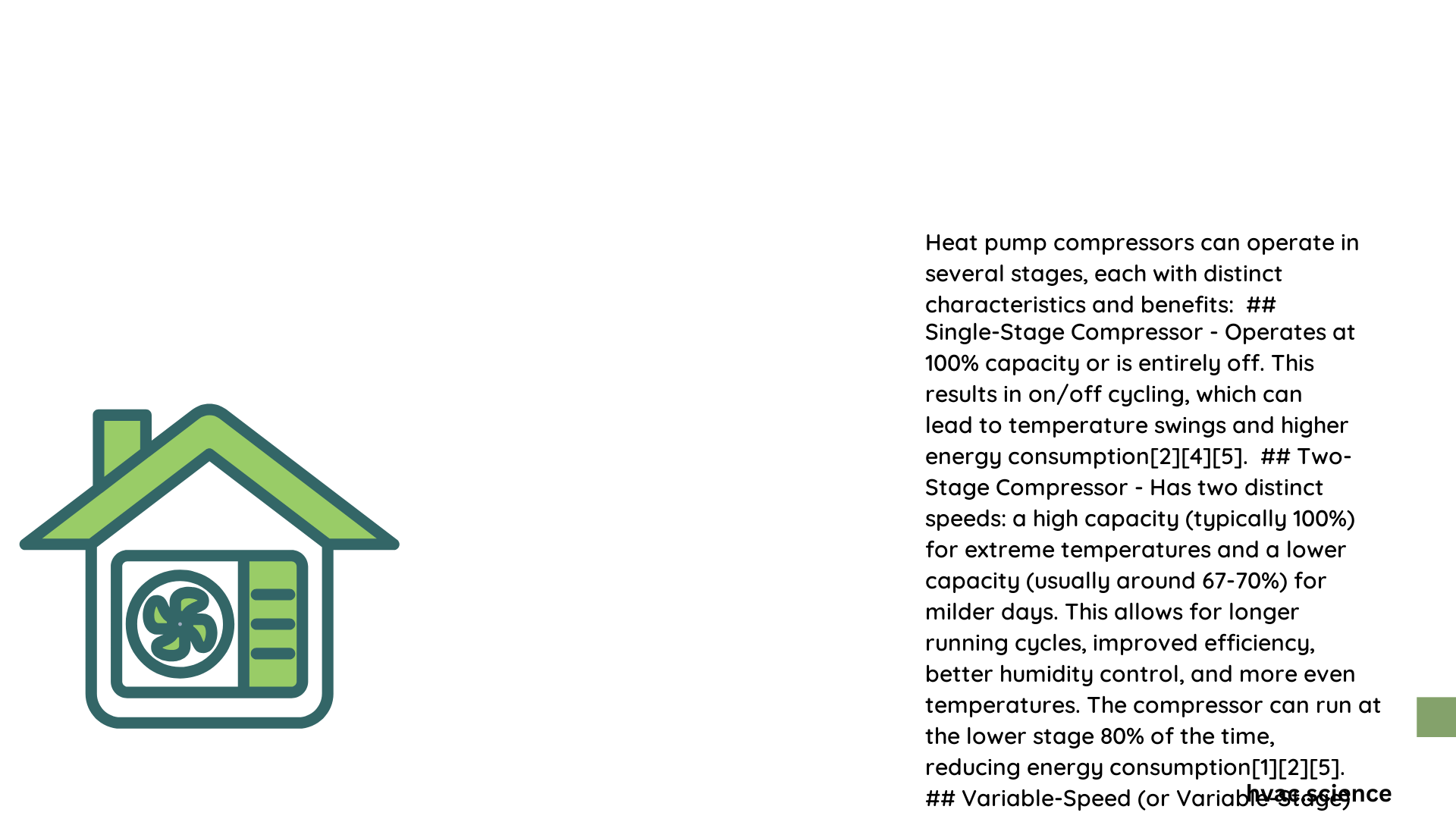Heat pump compressor stages represent critical technological variations in thermal transfer systems, enabling precise temperature control and energy management. These stages—single, dual, and variable-speed—offer progressively sophisticated approaches to heating and cooling, with each configuration delivering unique performance characteristics that impact system efficiency, operational flexibility, and long-term energy consumption across residential and commercial applications.
What Are Heat Pump Compressor Stages?
Heat pump compressor stages define the operational modes through which thermal energy transfer occurs. These stages determine how efficiently a heat pump can modulate its cooling and heating capacities based on environmental demands and internal system requirements.
Key Performance Characteristics of Compressor Stages
| Compressor Type | Speed Flexibility | Energy Efficiency | Temperature Control |
|---|---|---|---|
| Single-Stage | Fixed | Low | Basic |
| Dual-Stage | Two Speeds | Moderate | Intermediate |
| Variable-Speed | Continuous | High | Precise |
How Do Single-Stage Compressors Function?

Single-stage compressors operate at a constant, full-capacity mode, providing straightforward thermal management. These systems:
- Run at 100% output until target temperature is achieved
- Have lower initial purchase costs
- Demonstrate less energy-efficient performance
- Suitable for smaller residential spaces
- Typically feature simpler mechanical configurations
Efficiency Metrics for Single-Stage Systems
- SEER Rating: 13-16
- HSPF Rating: 7-8
- Typical Capacity Range: 1-5 tons
- Best For: Compact living spaces with consistent thermal loads
What Makes Dual-Stage Compressors Different?
Dual-stage compressors introduce enhanced operational flexibility by providing two distinct performance levels:
- High-Capacity Mode
- Rapid temperature adjustment
- Maximum output during extreme weather conditions
-
Quickly reaches desired indoor temperature
-
Low-Capacity Mode
- Maintains steady temperature
- Reduced energy consumption
- Extended system runtime
- Improved humidity control
Why Choose Variable-Speed Compressor Technology?
Variable-speed compressors represent the most advanced heat pump technology, offering:
- Real-time speed adjustments
- Continuous capacity modulation
- Precision temperature management
- Highest energy efficiency ratings
- Minimal temperature fluctuations
- Advanced inverter-driven mechanisms
Performance Advantages
- SEER Ratings: 20-26
- HSPF Ratings: 9-11
- Energy Savings: Up to 40% compared to traditional systems
- Noise Levels: Significantly reduced during operation
What Factors Influence Compressor Stage Selection?
Critical considerations include:
- Home square footage
- Local climate conditions
- Budget constraints
- Long-term energy efficiency goals
- Existing HVAC infrastructure
Technical Recommendations for Optimal Selection
- Assess regional temperature variations
- Calculate precise heating/cooling load requirements
- Evaluate long-term operational costs
- Consider professional HVAC consultation
- Review manufacturer warranty specifications
Cost-Benefit Analysis of Compressor Stages
| Stage Type | Initial Cost | Operational Efficiency | Long-Term Savings |
|---|---|---|---|
| Single-Stage | Low | Low | Minimal |
| Dual-Stage | Moderate | Moderate | Moderate |
| Variable-Speed | High | High | Significant |
Maintenance Considerations for Different Stages
- Single-Stage: Minimal maintenance requirements
- Dual-Stage: Periodic system calibration
- Variable-Speed: Advanced diagnostic capabilities
- Recommended Service: Annual professional inspection
Future Technological Trends
Emerging heat pump compressor technologies continue evolving towards:
– Enhanced inverter technologies
– Improved refrigerant management
– Greater energy efficiency
– Smart system integration
– Reduced environmental impact
Conclusion
Understanding heat pump compressor stages enables informed decision-making for optimal thermal management solutions tailored to specific residential and commercial requirements.
